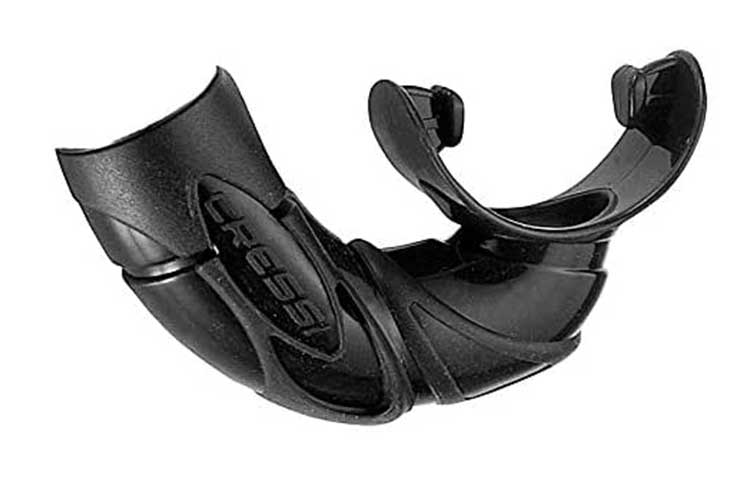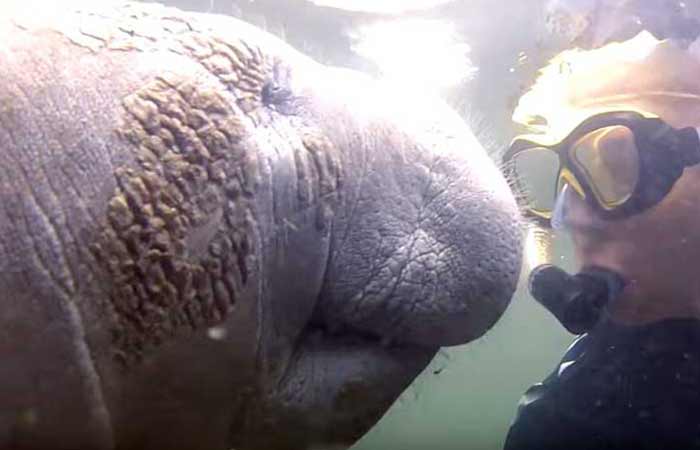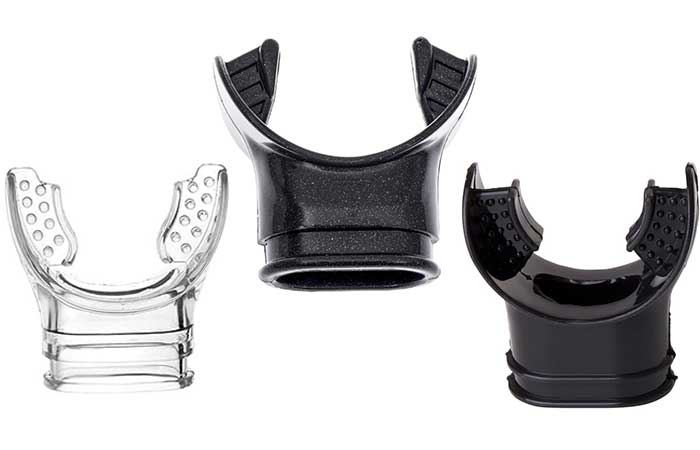How to Clean Snorkeling Gear: Snorkel Mouthpiece, Mask and Fins
With the right skills and snorkel gear set in the good condition, snorkeling can be really fun. Besides buying the right equipment, you also need to properly clean and store it. Taking care of your snorkeling gear is quite easy especially when you know exactly what to do.
The cleaning process for this gear, primarily the mouthpiece, mask and fins, can be broken down into 2 stages namely cleaning after buying the equipment, and cleaning after every snorkeling excursion.
For both cases, the cleaning process is quite straightforward as shall be explained below. Keep in mind that keeping your snorkeling equipment in good shape goes beyond simple cleaning as proper general care ensures you’ll have them for a long time.
Cleaning Items you’ll need
The items you’ll need for this exercise are as follows:
- Toothbrush
- Toothpaste
- Performance water
- Anti-fog spray
- Dishwashing liquid
- Soft towel/piece of cloth
In case you don’t have toothpaste or dishwashing liquid, you can use mild shampoo mixed in water.
First Cleaning: After Buying the Equipment
After buying your snorkel gear, you need to first clean them before heading out into the water with them. It’s common for all items with glass and plastic parts to be cleaned before use.

In the case of the snorkel masks, you need proper cleaning since they’re coated with a thin layer of an oily silicone substance for protection during their transportation. The cleaning process is as follows:
- Add some toothpaste to a toothbrush then use it to scrub the visor mask on both sides (inside and outside). While doing this, avoid touching it with your fingers as it could easily get oily and dirty.
- Rinse out the toothpaste with clean fresh water from a tap while making sure all the toothpaste is eliminated.
- Dry the mask with a soft piece of cloth. Keeping it wet could allow bacteria to attach themselves to it. You can also dry it in the wind although we don’t vouch for this method as it can capture dust especially when wet. Also, leaving it out in the sun isn’t clever as the plastic parts can easily get damaged.
- Repeat the cleaning process at least twice before the actual use to ensure that all of the oily film is washed away.
This process is called priming and is vital for the proper vision of the user owing to how much it helps in clearing the visor. This way, you’ll be sure that you’re not using dirty equipment or that you don’t get the right vision with your mask or visor.
Cleaning Before a Snorkeling Trip
While the focus with most equipment is on cleaning after use, proper cleaning of snorkeling equipment goes a long way in helping you have the proper vision and overall experience when in the water.
The cleaning is as follows:
- Apply anti-fogging spray to the snorkeling mask to prevent fogging when breathing underwater. If you don’t have this spray close by, use toothpaste applied to the mask by the brush and not your fingers.
- Rinse with clean water afterward. While cleaning with toothpaste requires that you completely remove the toothpaste residue, you only need light rinsing after using the anti-fog spray as it’ll help keep out the fog.
If you find yourself in the water and your mask is fogging, you can simply clean it with your saliva and it’ll work fine. Even in this case, avoid touching the visor with your bare hands since the fingers have oil that will make the visor dirty.
Cleaning After Each Use
You’ll notice that, after each use case, the snorkel mask may have dirt in the form of sand, salt water, sunscreen and many others.

Before storage, you will have to clean it to avoid dirt drying up on the equipment.
The processes are as follows:
Snorkel Mask
- Mix the commercial detergent in clean fresh water then rinse the snorkel mask thoroughly with it. The detergent (or mild soap) is used to help maintain the silicone on the mask by preventing deterioration and discoloration. Ensure you properly clean the part of the mask that rests on your face as it often has sunscreen and other beauty products which, if not cleaned properly, will be good breeding ground for bacteria.
- Rinse off the detergent with clean tap water until you have clean equipment without any dirt or undesirable odors.
- To prevent the accumulation of dust and bacteria, dry the equipment either with the soft towel or in the air (not the sun).
- Store the equipment in a cool dry place away from direct sunlight and chemical damage. The best temperatures are close to room conditions.
The snorkel mask should be handled with lots of care owing to its delicate nature.
Further Reading: Best Full-Face Snorkel Masks
Snorkel
The snorkel is a summative name for various parts including the breathing tube, the mouthpiece, snorkel keeper, the purge valve and the dry top. Each of these parts requires a different cleaning process from the others. For ease of identification, we shall take the breathing tube as the snorkel since it’s the most visible part and a signature of the snorkel.
Further Reading: How does a Snorkel Work?
Cleaning the breathing tube is done as follows:
- Close one end of the breathing tube then fill it with water mixed in a detergent leaving a small space.
- Close the other end of the tube with the other hand then shake it being careful not to damage the tube.
- Pour out the water then rinse several times with clean water.
You don’t need to dry it up since whipping motions will push out any water inside the tube. You should let it dry in the air for a while after the cleaning process.
Purge Valve
The purge valve of your snorkel has the all-important role of emptying the breathing tube of water when in use. It’s a thin piece of silicone in a round shape that drains the breathing tube and prevents water from entering it.
The purge valve is cleaned as follows:
- Rinse in copious amounts of fresh water after each use. You can add some soap and then rinse afterward with fresh water.
- Let it dry in the air after whipping it free of water.
Besides this cleaning procedure, always check the purge valve for any tears or holes which may compromise its ability to work.
Mouthpiece
Your snorkel has a soft piece of silicone material with a bite tab for you to hold between your teeth comfortably.

This piece often gets damaged when bitten on too hard and should thus be handled with care and checked each time you come out of the water.
Clean the mouthpiece as follows:
- Put it in soapy water then rinse it with lots of clean water.
- Whip it to get rid of any water to ensure it’s dry before storage.
Avoid sharing mouthpieces for snorkeling to avoid the transfer of germs. Even with proper washing, a snorkeling mouthpiece shouldn’t be shared.
Dry Top
The dry top is a piece of plastic at the top of the breathing tube with the role of sealing the tube automatically when you dive underwater. This keeps the water out of the tube making it easy to breathe. As you come back to the surface, the top opens allowing air in again.
It’s cleaned as follows:
- Clean with large amounts of clean water. If there is any debris on the dry top, use mild soap to clean it then rinse with water.
- Let it dry in the air before storage.
Always clean it after each use of the snorkel. Before going into the water again, try to submerge the breathing tube to gauge whether the dry top works or not.
Snorkel Keeper
A snorkel keeper is the part of the snorkel in the shape of a ring. This ring clips the tube to the straps of the snorkel mask. The snorkel keeper should rest on the left side of the straps of your mask. In this position, the snorkel will curve along the left side of the face.
The snorkel keeper is quite easy to break especially if maintained poorly. While it can be easily replaced, you can move the tube below the straps of your mask if it breaks while snorkeling.
It’s cleaned as follows:
- Wash in water with a mild detergent.
- Rinse in large amounts of clean water.
After each use and cleaning process, always check for dirt and damage on this part of the snorkel.
Fins
Fins are the most heavily used part of the snorkeling gear although their cleaning process is quite easy. You simply rinse them in fresh water then dry them up before storage.
This cleaning process should be done whether you snorkeled in fresh water, salty water, or pool water. The cleaning should be thorough especially if you’ll be storing the equipment for long such as during the winter.
Further Reading: Best Snorkeling Fins
Tips to Keep Snorkeling Gear in Good Condition
If you need your snorkeling gear in the best shape possible both in and out of the water, follow these tips:
- Always keep your snorkeling equipment in a protective box to avoid scuff marks. The box chosen ought to be airtight.
- Avoid putting your snorkel mask on the ground on the visor side since the latter can be easily damaged if the ground is rough and stony. Always use the other parts if you must place it down.
- When storing the snorkeling gear, make sure the conditions are as close to room conditions as possible. This means there shouldn’t be any extreme temperatures, no high humidity or dusty conditions. It should also not be stored in an area with direct sunlight as the sun can discolor and damage the parts easily.
- While the snorkeling gear has been created for the sand and water, never leave it in the sand or water for extended periods of time. The surfaces of the snorkeling parts are quite sensitive to scratches from sand and humid conditions are conducive for the growth of bacteria on the equipment.
- At all times, avoid touching the parts with your bare hands as you’ll only leave dirt on them. Rather, use a soft and dry piece of cloth such that the water doesn’t stay too long on the equipment to be a breeding ground for germs.
- To keep your mask from fogging up too much, don’t remove it unnecessarily since fogging occurs when the glass/plastic comes into contact with warm and moist air. Breathing out is one such source of this type of air. Maintaining the conditions inside the mask is a great way of keeping everything in check.
- If there are any instructions that came with the equipment, always follow these ones as they go a long way in keeping the equipment in proper working condition.
- Avoid walking on dry land with your fins. Rather, wade into the water until you’re at least waist-deep in the water before putting them on. If you’re afraid of the water, put them on then enter the water from a platform.
- Prolong the life of your fins’ rubber foot pocket by using grease or a silicone spray. These prevent it from rotting or degenerating in general.
- When storing fins, don’t place them below heavy objects as they easily lose their shapes (rubber items do that).
- When using fins, avoid balancing on their tips, especially when in shallow water as it degenerates them faster.
- As most of the snorkeling gear is made if rubber, always keep it away from petroleum products as they degenerate quite fast. In fact, petroleum fumes are enough to break your fins into pieces after a significant period of exposure.
- When drying fins, point the paddle side up so that water can drain from the foot pockets with ease.
- You can also use shampoo to clean the snorkeling equipment. Avoid cleaning solutions with mint or other potential irritants to the eyes.
- If the snorkeling gear has mold on it, soak it in bleach for 5 minutes then use a toothbrush to clean it off. Rinse with clean water afterward.
With these tips, you’re guaranteed that your snorkeling gear will always be in great shape for the next underwater adventure.
More about Snorkeling
- Snorkeling-Meaning, History, Application Benefits & FAQs
- Do You Need to Know How to Swim to Snorkel
- How to Snorkel Safely: Beginner, Non-Swimmer & Advanced Snorkeling Guide & Tips
- Full-face Snorkel Masks vs Traditional/Regular Masks
- How Much Does it Cost to Snorkel??
- Top Snorkeling Quotes, Funny Puns & Jokes for your Captions
Best Snorkel Gear
- Best Snorkeling Vests/Jackets: Inflatable & Buying Guide
- Best Underwater Cameras for Snorkeling
- Best Waterproof Bags & Backpacks for Snorkeling and Other Beach Activities
- Best Snorkeling Water Shoes for Women & Men + Buying Guide
Snorkeling Destinations






